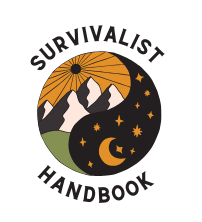In a world full of unpredictable situations and unexpected challenges, having basic survival skills is not only reassuring but can also make a life-saving difference. Whether you find yourself navigating the wilderness, facing urban disasters, or encountering threatening scenarios, knowing how to survive in the desert is a crucial skill set to possess. From building shelters to finding water and food, staying warm, and signaling for help, these essential tips empower you to become self-reliant and resilient in the face of adversity. Whether you’re an adventurous soul preparing for extreme situations or simply seeking preparation for an outdoor adventure, mastering the basics of surviving in the desert equips you with the know-how to overcome challenges and emerge stronger.
Basic Survival Skills for the Desert
In a world where unexpected situations can arise, mastering basic survival skills offers peace of mind and the potential to save lives. Understanding the unique challenges of the desert environment is essential for anyone venturing into this harsh and unforgiving landscape. By developing a set of essential skills and knowledge, you can increase your chances of surviving and thriving in the desert.
Understanding the Desert Environment
Before setting foot in the desert, it is crucial to have a solid understanding of the environment you will be facing. Deserts are characterized by extreme temperatures, limited vegetation, and scarce water sources. Familiarize yourself with the climate patterns, typical weather conditions, and potential dangers of the specific desert you will be exploring.
Assessing the Situation
In any survival scenario, the ability to assess your situation accurately is paramount. Take stock of your resources, equipment, and physical condition. Evaluate the severity of the situation and determine the immediate threats you face. This assessment will guide your decision-making process and help prioritize your survival actions.

Finding Shelter
Finding appropriate shelter is crucial in the desert to protect yourself from the scorching sun and potential sandstorms. Look for natural shelters such as rock formations, caves, or overhanging cliffs. If natural shelters are scarce, use your surroundings to construct a shelter using available materials like branches, rocks, or even your own clothing. Ensure your shelter is well-insulated and provides shade to minimize heat exposure.
Locating Water Sources
Water is a precious resource in the desert, and finding a reliable water source is essential for survival. Look for signs of water such as dry riverbeds, vegetation, or animal tracks that may lead to a hidden water source. Digging a solar still, which collects and condenses water through evaporation, can also be an effective method to obtain drinkable water. Additionally, consider carrying a water purification method, such as a portable water filter or iodine tablets, to treat any water you find.

Obtaining Food in the Desert
Finding food in the desert can be challenging due to the scarcity of vegetation and wildlife. Learn to identify edible plants and insects that can sustain you in times of need. Look for prickly pear cacti, mesquite beans, and desert succulents as potential sources of food. Insects such as ants, termites, and grasshoppers can also provide a protein-rich meal. It is important to avoid consuming any unidentified plants or animals, as they may be poisonous.
Staying Warm in the Desert
Contrary to popular belief, deserts can experience significant temperature drops during the night. Staying warm is crucial to prevent hypothermia. Layer your clothing to trap body heat and choose materials that wick moisture away from your skin. Build a fire using available dry wood to provide warmth and for cooking. Use thermal blankets or sleeping bags to insulate yourself during the cold desert nights.
Navigating in the Desert
Navigating in the vast expanse of the desert can be challenging, especially without any landmarks or visible trails. Carry a compass and a map of the area, and familiarize yourself with basic navigation skills. Pay attention to natural indicators such as rock formations, the position of the sun, and the movement of the stars at night. Additionally, marking your route with recognizable landmarks or trail markers can help you avoid getting lost.
Signaling for Help
In the event of an emergency, being able to signal for help can be a lifesaver. Carry signaling devices such as a whistle, signal mirror, or a brightly colored piece of cloth. Use these tools to attract attention and alert rescuers to your location. If possible, create a large SOS sign on the ground using rocks or branches to make your presence more visible from the air.
Dealing with Desert Wildlife
The desert is home to a variety of wildlife, some of which can pose a threat to your safety. Familiarize yourself with the native wildlife in the desert and learn how to avoid encounters with dangerous animals such as snakes, scorpions, or spiders. Practice cautious behavior and never approach or provoke wild animals. If bitten or stung, seek medical help immediately.
Preparing a Desert Survival Kit
Having a well-equipped survival kit is essential for any desert adventure. Your survival kit should include items such as a knife, fire-starting tools, water containers, a compass, a first aid kit, a signaling device, and high-energy snacks. Customize your kit based on your specific needs and the duration of your trip. Regularly check and replenish your supplies to ensure they are in good working condition.
By developing these basic survival skills for the desert and understanding the unique challenges of this environment, you empower yourself to face and overcome adversity. Remember to always prepare adequately, stay calm, and prioritize your safety and well-being above all else. With the right knowledge and mindset, you can navigate the desert with confidence and emerge stronger from any unexpected situation.

